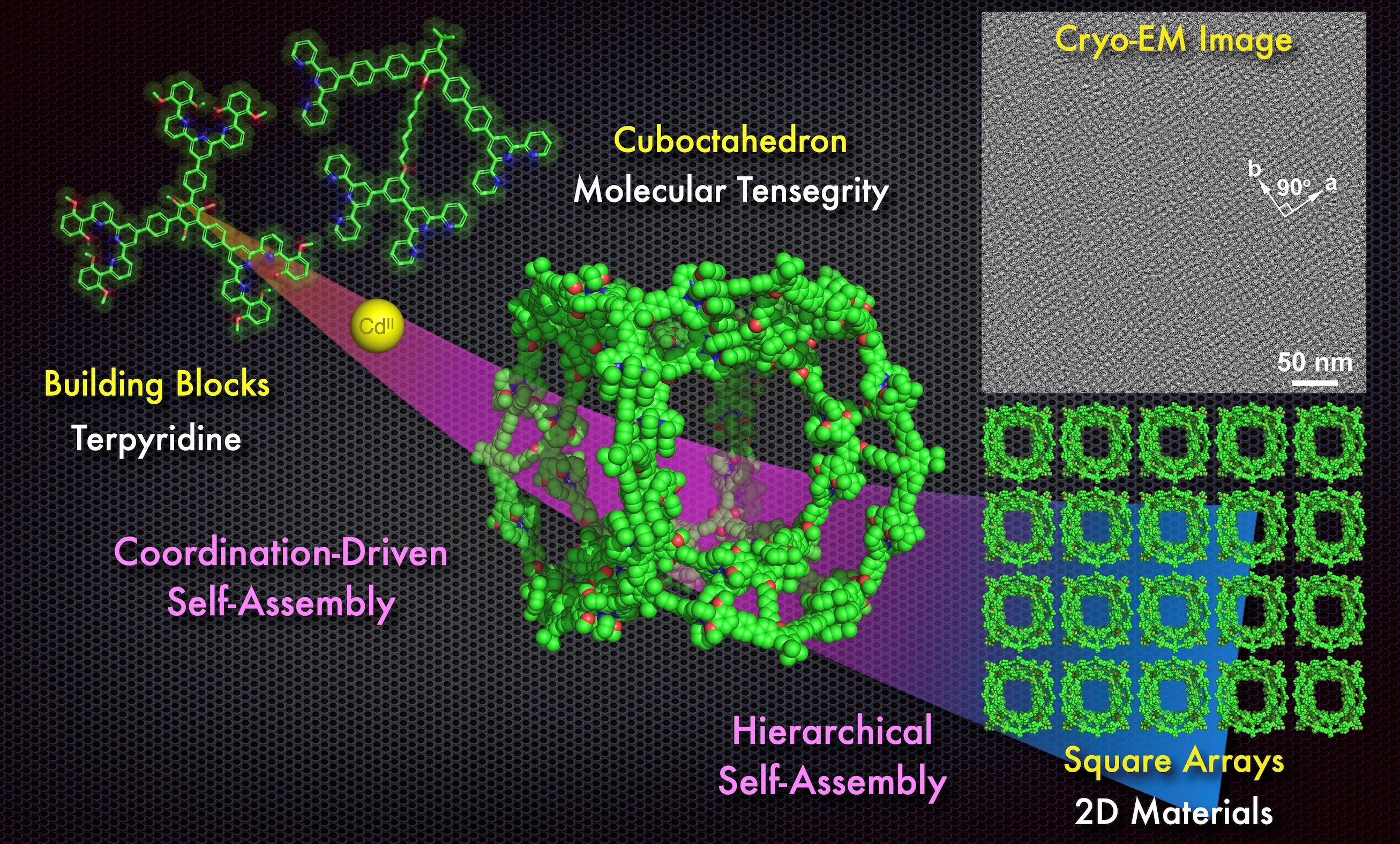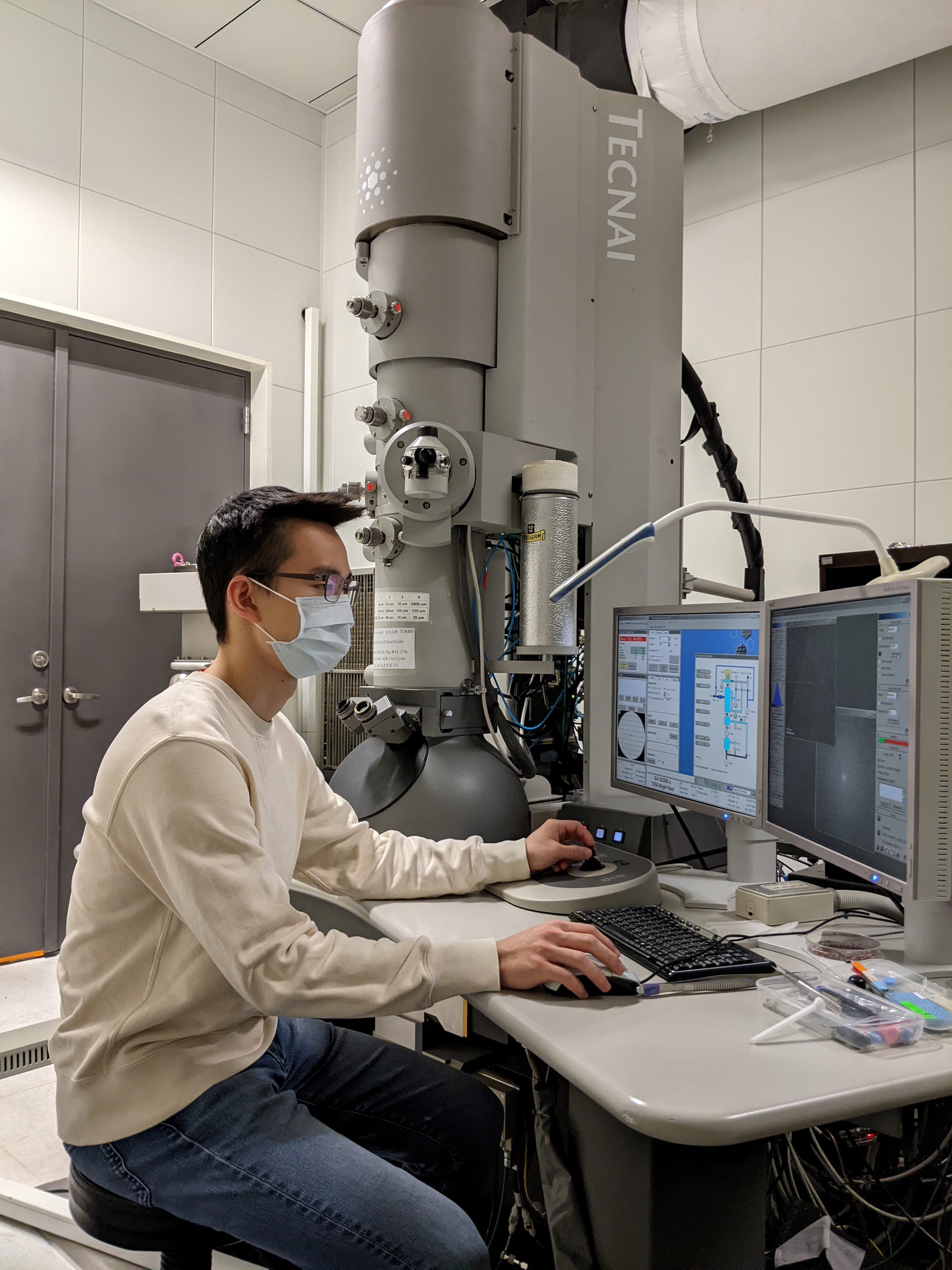- The full article entitled “A 10-nm-sized multicompartment cuboctahedron and its 2D hierarchical arrays observed by cryo-EM” can be now found at the Chem website at https://doi.org/10.1016/j.chempr.2021.11.013
- Authors: Lipeng He, Hung-Kai Hsu, Lijie Li, Lin-Ting Lin, Tsung-Han Tu, Tiow-Gan Ong, Gunn-Guang Liou,* and Yi-Tsu Chan*
In nature, bacterial cell surface layers (S-layers) are the commonly observed envelope structures in prokaryotic organisms. S-layers are composed of identical proteinaceous subunits, which self-assemble into ordered porous 2D arrays with thickness of 5-15 nm and unit cell sizes in the range of 3-30 nm. They provide organisms with important functions in cell protection and surface interactions. Inspired by this observation with a knowledge in protein engineering, carefully tailored protein motifs could be tiled into various 2D crystalline materials. However, porous layers assembled from artificially synthesized molecules of similar dimensions have been rarely explored, due to the synthetic challenge in construction of giant well-defined building units.
Aiming for chemical mimicry of S-layer self-assembly, a research team led by Prof. Yi-Tsu Chan in the Department of Chemistry at National Taiwan University successfully develops precise coordination-driven self-assembly methodology for rational construction of a molecular cuboctahedron with a circumscribed sphere diameter of over 10 nm. To the best of our knowledge, it is the largest synthetic cuboctahedron reported so far. The cuboctahedron assembled from 76 subcomponents contains a double-layered structure, resembling a tensegrity (tensional integrity) architecture, which is the key design element for the successful self-assembly. It is noteworthy that the high stability of the cuboctahedral complex enables the small-angle X-ray scattering (SAXS) measurements under dilute conditions, providing crucial structural evidence. More importantly, in collaboration with the Academia Sinica Cryo-EM Center (ASCEM), the unprecedented formation of large-area, ordered S-layer-like square arrays of the giant cuboctahedra in the vitrified acetonitrile solution with a lattice constant of 7.9 nm was corroborated by cryo-EM experiments. The local packing defects such as dislocations and grain boundaries in the 2D arrays were elucidated as well. We anticipate that the general self-assembly methodology and the serendipitous observation of S-layer-like square arrays presented in this research will lay the foundation for developing bottom-up techniques to construction of 2D porous supramolecular materials.
This research was supported by the Ministry of Science and Technology of Taiwan, the Center for Emerging Materials and Advanced Devices at National Taiwan University, and the Academia Sinica Investigator Award Grant. We appreciate the technical support from the Image Core Facility of Institute of Molecular Biology at Academia Sinica, the Academia Sinica Cryo-EM Center (ASCEM), and the Academia Sinica Grid-Computing Center (ASGC).

Hierarchical self-assembly of gigantic supramolecular cuboctahedra

Mr. Hung-Kai Hsu — the second author of this work — is operating the cryo-electron microscope in Academia Sinica.